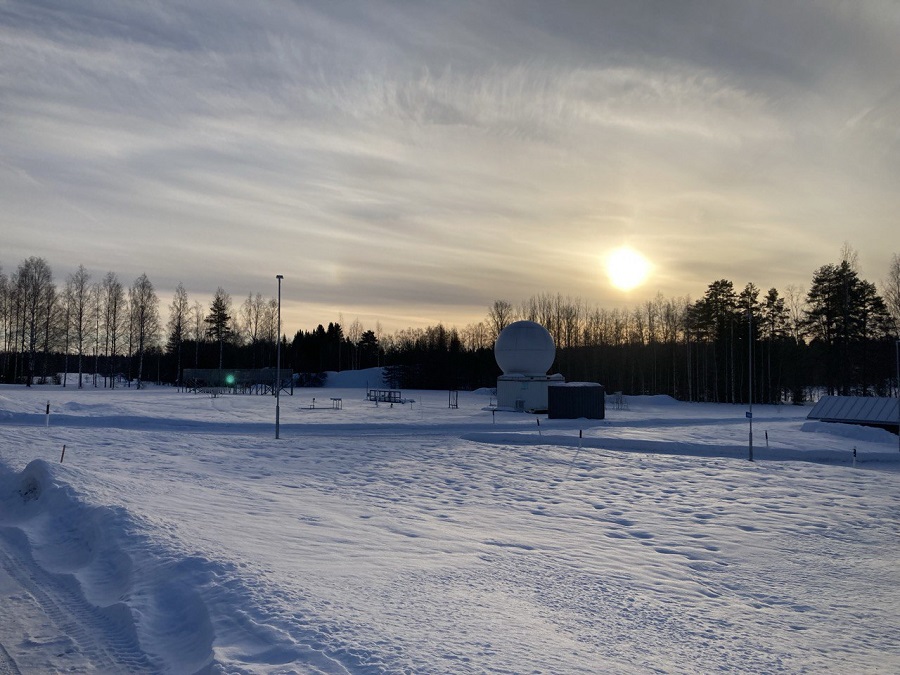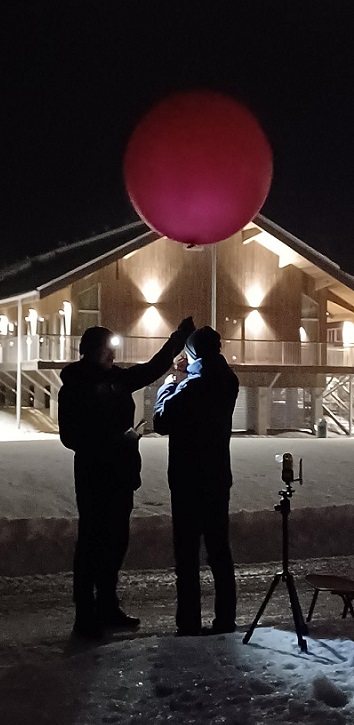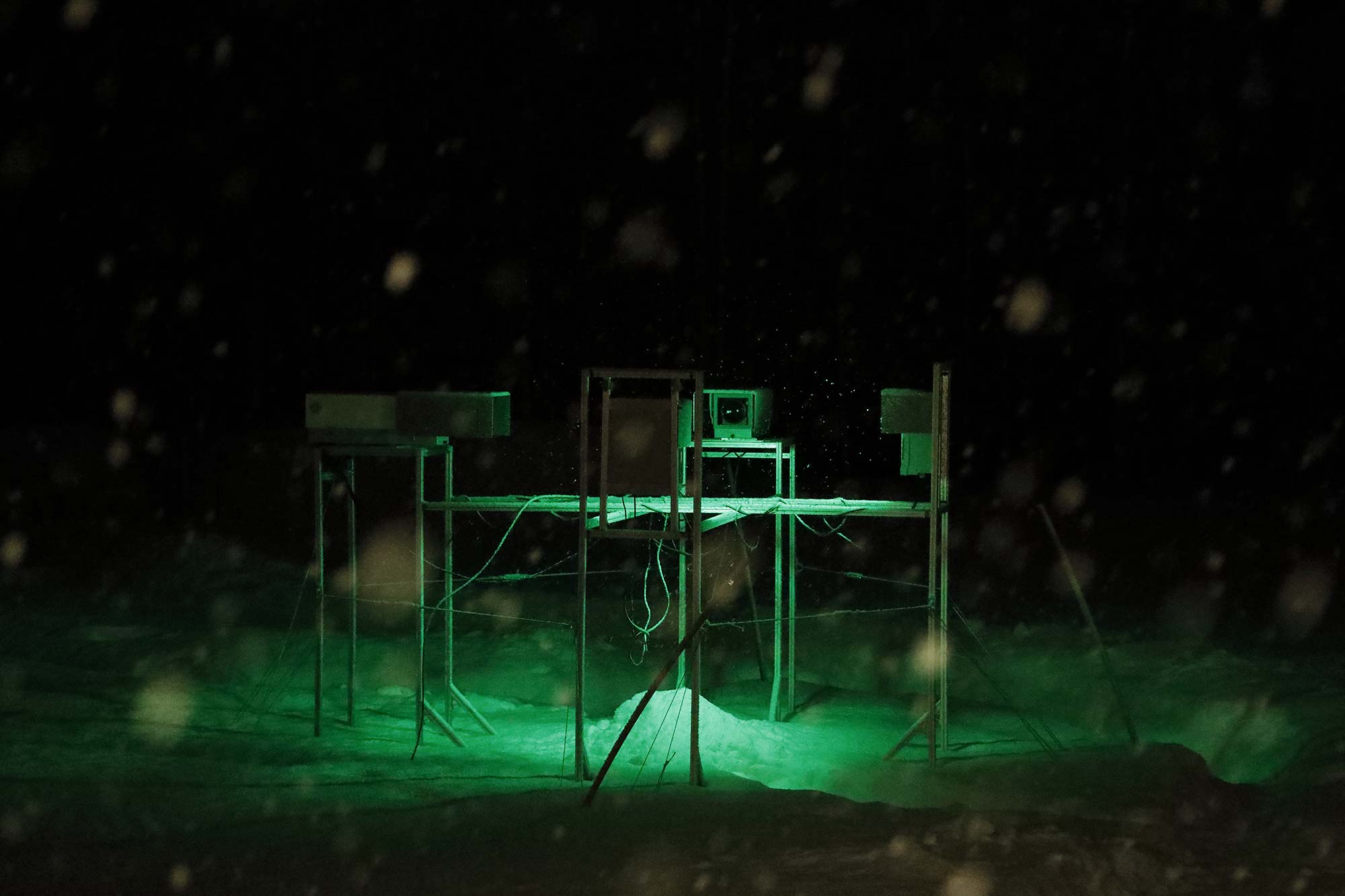Chasing the secrets of snowflakes

As part of the DFG (Deutsche Forschungsgemeinschaft) funded project EMPOS (Evaluating Microphysical Pathways Of Midlatitude Snow Formation), Julian Meusel from IMKTRO and Nils Pfeifer from Leipzig University traveled to Hyytiälä in Finland. The 6-week field campaign was planned in cooperation with Leipzig University and Helsinki and took place at the Hyytiälä Forest Station from late January to early March 2024. "During our field campaign, we launched 37 Graw DFM-17 radiosondes every 3 hours during snowfall events - mostly at night," explains Julian Meusel from KIT. Various synoptic situations such as warm and cold fronts, occlusions and a cyclone, as well as meteorological phenomena like Diamond Dust at temperatures ranging from -15°C to +1°C were recorded. Additionally, different snowfall intensities were observed, ranging from light to heavy snowfall, as well as beautifully formed individual dendrites to heavily rimed particles, as observed by the snowfall sensor VISSS (Video In Situ Snowfall Sensor) with impressive images. "Even though there were initial difficulties with the radiosondes, I really enjoyed working outside in the snow," says Julian Meusel, summing up his participation in the campaign.


The Hyytiälä Forest Field Station is located about two hours north of Helsinki by train and offers year-round measurements for research as well as support for field campaigns, course activities and other events. Research topics at the station range from soil to atmospheric processes. For the EMPOS project, researchers had access to a variety of measurement instruments that are well suited for comparison with ICON simulations. These include, among others, a cloud radar, a microwave radiometer, a disdrometer and a lidar operated by the University of Helsinki. In addition, measurements within and above the tree canopy to investigate the relationship between ecosystems and the atmosphere are conducted at the SMEAR II station at the same location. This station continuously monitors the ecophysiology and productivity of the forest, soil and water balance, meteorology, solar and terrestrial radiation, ambient concentrations, atmospheric aerosols, and deposition. Since November 2023, in addition to the instruments of the University of Helsinki, a snowfall camera, the so-called VISSS (Video In Situ Snowfall Sensor) from Leipzig University as part of the EMPOS project, has been available on site in Hyytiälä. This camera continuously films snow particles, and variables such as riming mass can be calculated from the VISSS data and compared with model variables. "The VISSS combines two high-resolution cameras with a large observation volume and thus provides an unprecedented insight into the properties of snowflakes," says Nils Pfeifer from Leipzig University.
The main research goal of the EMPOS project, led by Prof. Corinna Hoose of IMKTRO and Dr. Max Maahn of the University of Leipzig, is to improve our understanding of microphysical processes during snowfall formation by combining novel in-situ snowfall observation instruments such as the VISSS with ICON simulations. To achieve this, the observed contributions of riming, aggregation, and deposition growth to the total snow mass and their frequency from the VISSS data are compared with atmospheric models.
The targeted investigation of individual processes ensures that identified biases in the model can be attributed to specific snowfall formation mechanisms, allowing for model improvement where it is most relevant.
